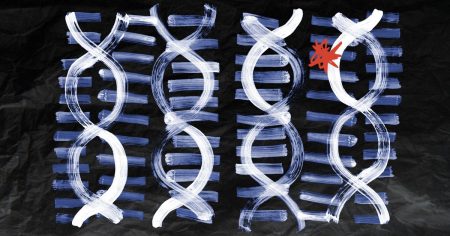Researchers at the University of Alabama in Birmingham have discovered a potential method to prevent dyskinesia, a side effect of long-term Parkinson’s treatment. By treating dyskinesia as a “bad motor memory” and blocking the protein Activin A, they were able to halt the development of uncontrollable movements in mouse models. This breakthrough has the potential to significantly improve patients’ quality of life and extend the effectiveness of current Parkinson’s treatments.
Common treatments for Parkinson’s disease can alleviate short-term symptoms but may lead to significant long-term issues for patients, including dyskinesia characterized by involuntary movements and postures. Researchers in a recent study published in The Journal of Neuroscience adopted a novel approach to dyskinesia by treating it as a “bad motor memory.” By inhibiting a protein called Activin A, they were able to stop dyskinesia symptoms and essentially erase the brain’s memory response to certain Parkinson’s therapies.
Parkinson’s disease is caused by the death of dopamine-producing neurons, leading clinicians to prescribe L-DOPA, a dopamine precursor, to address the dopamine deficiency. While L-DOPA can be beneficial in the short term, it can also lead to L-DOPA-induced dyskinesia in some patients over the long term, resulting in involuntary movements such as twitching or fidgeting. Researchers aimed to prevent dyskinesia from developing in the first place by targeting the protein Activin A, which could potentially allow patients to continue their Parkinson’s treatment for longer durations.
The research team focused on examining the striatum, a brain region crucial for motor control, to identify which cells were storing the “bad motor memory.” They found that neurons called D1-MSNs behaved similarly to neurons in the hippocampus when forming a memory, expressing genes indicating activation by L-DOPA and the creation of new connections with other cells. By inhibiting the protein Activin A, researchers successfully prevented the development of L-DOPA-induced dyskinesia in mouse models, essentially erasing the brain’s memory of the motor response to L-DOPA.
Karen Jaunarajs, PhD, assistant professor at the UAB Department of Neurology, explained the study’s key findings, identifying that D1-MSNs stored the “bad motor memory.” By utilizing single-cell RNA sequencing, researchers mapped changes in gene expression across various cells in the striatum during the development of dyskinesia. They found that some D1-MSNs were activated by L-DOPA and necessary for creating new connections, similar to the process of recalling a memory. By blocking Activin A, researchers were able to prevent the development of dyskinesia in mouse models, offering potential targets for therapy development.
Dr. Chandril Chugh, a neurologist not involved in the research, emphasized that the study enhances understanding of dyskinesias post-syndopa treatment and improves patient care. This research provides insight into how striatal neurons behave after dopamine stimulation, offering valuable information for the treatment of Parkinson’s disease. The study underscores the importance of considering dyskinesia as a result of “bad motor memories,” potentially changing the way movement disorders are approached in research and therapy development.













